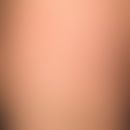Synonym(s)
HistoryThis section has been translated automatically.
Cortist WW, 1928
DefinitionThis section has been translated automatically.
Worldwide occurring worm disease, caused by the incorrect colonization of humans with larvae of the species of sucking worms:
- Orniothobilharzia
- Austrobilharzia
- Bilharziella
- Trichobilharzia
- Gigantobilharzia
In Europe, bilharzilla, trichobilharzia, gigantobilharzia are responsible for the disease.
You might also be interested in
PathogenThis section has been translated automatically.
The physiological final host of the flukes from the above mentioned genera are birds, in most cases ducks. After the larvae of the worms have penetrated through the skin of the birds, they develop in blood vessels near the intestines into sexually mature sucker worms. These lay their eggs there. These enter the birds' intestines and are excreted with the faeces.
The larvae of the 1st generation (miracidia) develop in the water. These infest another intermediate host, mostly snails of the genera Limnae and Radix (pulmonary snails). Afterwards, larvae of the 3rd generation (cercaria) develop via another larval stage and a 3rd intermediate host (fish). As water temperatures rise in spring and summer, Cercarians search for their natural final host (birds) again, thus closing the cycle.
Bathing humans can be attacked accidentally (false host), whereby the cercaria, which are drilled into the skin, cannot develop further. They die off.
Occurrence/EpidemiologyThis section has been translated automatically.
Central European waters with occurrence of freshwater snails of the genus Limnaea and Radix.
EtiopathogenesisThis section has been translated automatically.
LocalizationThis section has been translated automatically.
trunk and extremities, in places not covered by the swimwear
ClinicThis section has been translated automatically.
Strongly itchy, 0.2-0.5 cm large, red or even haemorrhagic papules and wheals at the invasion sites, a few minutes up to one hour after exposure Duration until complete healing: about 10-20 days. Persons already sensitized by previous contact may develop a generalized maculopapular exanthema 10-24h after repeated exposure.
DiagnosisThis section has been translated automatically.
The anamnesis with reference to bathing in open waters as well as the infestation pattern (parts of the body not covered by the swimsuit) lead to a suspected diagnosis.
Differential diagnosisThis section has been translated automatically.
Trombidiosis: Urticarial exanthema under tight-fitting clothing. No relation to swimming event.
Cnidarian larval dermatitis caused by larvae of the jellyfish Linuche unguiculata after swimming. This occurs mainly in the western tropical Atlantic(salt water). An urticarial exanthema is triggered by the cnidocytes of the larvae. However, these typically occur under swimwear.
Urticaria: variable wheal formations. No relation to a single bathing situation.
TherapyThis section has been translated automatically.
External therapyThis section has been translated automatically.
Internal therapyThis section has been translated automatically.
LiteratureThis section has been translated automatically.
- Kolářová L et al (2013) Cercarial dermatitis, a neglected allergic disease. Clin Rev Allergy Immunol 45:63-74.
- Omar HM ET AL. (2016) Gigantobilharzia, possible cause of cercarial dermatitis: Case report. Int J Health Sci (Qassim) 10:147-Q50.
- Selbach C et al (2016) Estimating the risk of swimmer's itch in surface waters - A case study from Lake
- Baldeney, river dysentery. Int J Hyg Environ Health 219:693-699.
- Stanger Ch (2015) Cercaria dermatitis. In: E.v.Stebut (Ed.) Traveler dermatoses. P.176-177. Springer-Verlag Berlin, Heidelberg
- Veleizán AA et al (2016) Cercarial dermatitis of bathers in northern Argentine Patagonia. Medicina (B Aires) 76:25-29.
Incoming links (16)
Anthrenus dermatitis; Bath dermatitis; Bathing scabies; Caterpillar dermatitis; Cercaria; Cercarial dermatitis; Cnidarian larvae dermatitis; Hydrocortisone cream hydrophilic 0.25/0.5 or 1% (nrf 11.36.); Plathelminthes; Polidocanol zinc oxide shaking mixture 3/5 or 10% (nrf 11.66.) [white/skin coloured].; ... Show allOutgoing links (15)
Antihistamines, systemic; Clemastine; Cnidarian larvae dermatitis; Dimetinden; Glucorticosteroids topical; Hydrocortisone; Hydrocortisone cream hydrophilic 0.25/0.5 or 1% (nrf 11.36.); Hydrocortisone emulsion hydrophilic 0.5-1; Papel; Polidocanol; ... Show allDisclaimer
Please ask your physician for a reliable diagnosis. This website is only meant as a reference.





